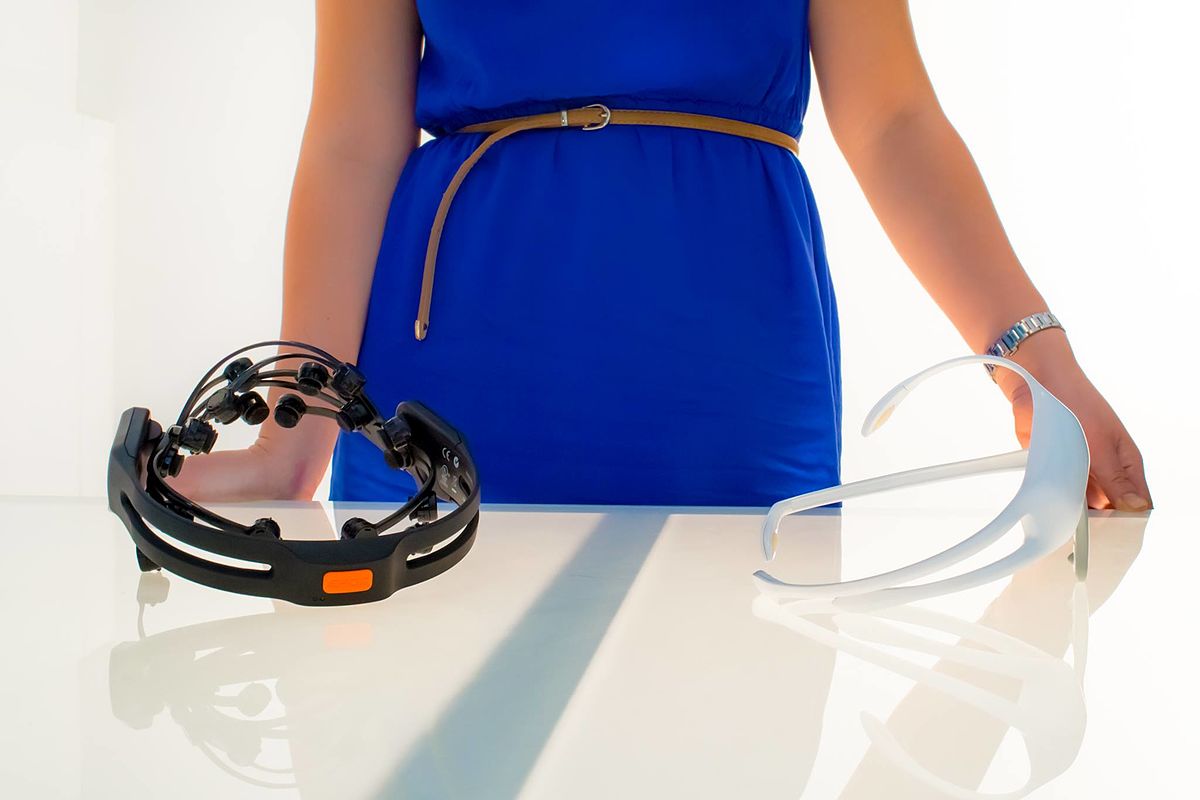Business
6 ways Tan Le’s brain control technology has changed lives
Tan Le is improving lives with technology that lets subjects control objects with their mind. Here are six applications of this technology.

Technology and innovation keynote speaker Tan Le has truly changed the world with her “Star Wars”-inspired brainwear that gives you the Jedi mind-control you’ve always wanted. Her cutting-edge company, Emotiv Innovations, has created a non-invasive headset that allows you to control objects with nothing but your thoughts. The new technology reads your EEG brain waves and turns your thoughts into actions. While this seems like an incredibly fun toy for most of us, researchers are using it in ground-breaking ways to better the lives of many.
Her revolutionary technology has been utilized by scientists across the globe to transform lives with breakthrough research and inventions.
1. Paraplegic driving Formula 1 race car
Robert Hubner Mendes, founder and CEO of the Robert Mendes Institute, is a paraplegic man with a love for going fast. In 2017, Mendes used Le’s Emotiv EEG headset to drive an F1 car around a Brazilian speedway using nothing but his mind. The specially crafted car had no foot pedals or steering wheel; it only had a computer screen that helped Mendes visualize the movements he wanted to make. Mendes described the interaction in which he simply thought “go” and the car accelerated as “unbelievable.”
2. Giving control to a woman in a semi-vegetative state
After a tragic car accident, Cora found herself in a semi-vegetative state. She was only able to communicate by blinking and smiling, although her mother recalls never seeing a smile until they gave her an Emotiv headset. After hooking her up to the EEG brainwear, Cora did the simple task of moving a box across a computer screen. She smiled for the first time since the accident, because she finally had control over something in her life, even if it was as simple as moving a digital box. It gave her and her family hopes for a more autonomous future for Cora.

An Emotive EEG headset was used by paraplegic Robert Hubner Mendes to drive an F1 car in a speedway in Brazil. (Source)
3. Gaming and brain development
The Emotiv team uses the headset technology to train people’s focus. At least it started this way. By having headset wearers focus on moving a box around the computer screen, they were getting a sense of what applying your full focus truly felt like. This training launched into gamers hacking their virtual reality games and computer games to incorporate their Emotiv headset, and finally, games being produced with the intention of the user controlling the game through their EEG headset.
4. Tracking athletes mental states
ESPN recently hooked up super-star quarterback Paxton Lynch to an Emotiv headset and ran him through the Pressure Test. In this high-pressure obstacle course, Lynch had to hit moving targets while swinging punching bags tried to take him out from every angle. The headset tracked brain activity to see which parts of the brain high-performers like Lynch used to zero in on their targets and ignore other obstacles. They found that the areas of the brain related to goal-oriented motivation increased more than 150 percent, while the prefrontal cortex (the area that acknowledges disruptive stimuli) became silent.
5. Robotic limbs for amputees
In the past decade, students in universities around the world have used Le’s brainwear technology to control robotic limbs they created with the purpose of directing their findings towards amputee technologies. At the age of 21, Ryan Mintz created a fully functioning robotic arm with nothing but the Emotiv headset, a laptop, and the arm of his design. Now the only piece needed to bridge the gap is how to attach the limb. Le recently visited Phan Truong Anh Khoi and Nguyen Cong Huy at the Trung Vuong School in Hanoi, Vietnam to see how they developed their own version of a robotic arm using the Emotiv technology.
6. Autism research
The Emotiv headset has recently been implemented in autism research and although it’s too soon to release any findings, Le mentioned that there have been promising developments in providing non-verbal children with autism a means of communication.
(Featured image by Chrissshe via Wikimedia Commons. CC BY-SA 4.0.)
—
DISCLAIMER: This article expresses my own ideas and opinions. Any information I have shared are from sources that I believe to be reliable and accurate. I did not receive any financial compensation for writing this post, nor do I own any shares in any company I’ve mentioned. I encourage any reader to do their own diligent research first before making any investment decisions.

-

 Crypto2 weeks ago
Crypto2 weeks agoCrypto Markets Slide as Bitcoin Breaks $90K, Year-End Pessimism Grows
-

 Impact Investing1 week ago
Impact Investing1 week agoTreeblock Showcases Sustainability Solutions at ADIPEC Abu Dhabi
-

 Cannabis2 weeks ago
Cannabis2 weeks agoRemexian Wins Legal Battles Amid German Cannabis Licensing Dispute
-

 Impact Investing4 days ago
Impact Investing4 days agoHigh Awareness, Low Adoption: The VSME Challenge for European SMEs


























You must be logged in to post a comment Login